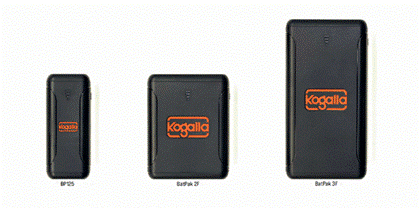
Who, What, When, And How Much? Key Questions To Ask When Faced With A Potential Sovereign Immunity Defense
October 10, 2016
This article was originally published in the Subrogator, a publication by the National Association of Subrogation Professionals, 2016. © Copyright 2016 by NASP. All rights reserved. Republished by Butler with permission from NASP.
With each new claim we navigate a myriad of potential obstacles to recovery. As subrogation professionals, we work to quickly identity these issues and evaluate the best recovery strategy. In doing so, some obstacles may first appear insurmountable, but later give way to the ever diligent subrogation professional. One such obstacle is the concept of sovereign immunity.
While sovereign immunity does at times prevent recovery, it does not automatically bar all claims against government entities and agencies. As a general rule government entities and agencies enjoy the benefit of sovereign immunity and cannot be sued absent consent. Immunity is sometimes waived by contract. Additionally most governments have, to some extent, waived immunity by statute and have agreed to be held liable for certain claims. Understanding the scope of any such waiver is critical to evaluating recovery potential. Always remember to ask these four key questions: Who, What, When, and How Much?
Who Is Subject To The Waiver?
Like most issues, the scope of a waiver of sovereign immunity differs by jurisdiction. Some jurisdictions have chosen to permit claims against all sovereigns and all levels of government operation, while others draw a distinction between the type of sovereign being sued. For example, in Georgia, a state entity can be held liable for creating nuisances, while Georgia counties enjoy immunity for the same claim.[1] This is because the waiver of immunity in Georgia’s State Tort Claims Act does not apply to counties or municipalities.[2] Thus, when reviewing a statutory waiver of immunity, it is important to first review any accompanying definition section or case law further defining the scope of the statute. Do not be led astray by the fact that the term “state” may be defined differently in different jurisdictions.
What Type Of Claims Are Subject To The Waiver?
Waivers of immunity also differ in scope with regard to what types of claims are permitted. With regard to claims against the federal government, the Federal Tort Claims Act waives immunity for claims “caused by the negligent or wrongful act or omission of any employee of the Government.”[3] This seemingly broad waiver allows nearly all types of negligence claims, but is limited by a subsequent section of the Act that lists thirteen exceptions to the waiver.[4] The most litigated of those exceptions is the exclusion of claims involving discretionary functions. That is, the federal government cannot be sued for claims involving policy decisions. Most states have adopted the “discretionary function” exception in some fashion, and have limited the waiver of immunity to only those claims involving operational decisions.[5] For example, a claim alleging the failure to erect a stop sign is not likely to succeed, because the government maintains immunity for discretionary decisions. On the other hand, a claim for negligently erecting the stop sign may be permitted, because the process by which the sign is installed is operational in nature. Understanding the difference, and being able to frame a claim as “operational negligence” will improve the likelihood of recovery.
In lieu of a broad waiver and accompanying list of exceptions, some jurisdictions have instead set forth waivers of immunity that are claim specific. In Texas, the waiver of sovereign immunity applies only to torts arising from publicly owned vehicles, premises defects, and injuries related to the use of public property.[6] These claim specific waivers may also exist in addition to other waiver statutes. For example, some jurisdictions have specifically waived immunity for collisions with public vehicles.[7] Other jurisdictions waive immunity to the extent the government entity procured insurance for the specific risk at issue.[8] Thus, if the general tort claim act in your jurisdiction does now allow for recovery, be sure to keep looking for another waiver of immunity that may nonetheless be applicable to your claim.
When Do Claims Need To Be Filed To Take Advantage Of Waiver?
In addition to reviewing the substantive scope of a waiver, most tort claim acts that waive immunity also statutorily alter the deadlines for filing claims. The normal statute of limitations period is often shortened to require prompt action by the claimant. Under federal law, claims must be submitted within two years of the loss, or within six months of the claim being formally denied, whichever period is shorter.[9] Additionally, the Federal Tort Claims Act requires that claims be submitted to the appropriate government agency for review before a lawsuit can be initiated. Thus, claims involving government entities often require immediate attention so that agency review can be completed prior to the running of any time limitation. Failure to adhere to notice and filing requirements could result in a complete bar of the claim.
How Much Of Your Claim Does The Waiver Extend To?
Assuming there is an applicable waiver of immunity and the deadline for filing has not yet passed, the claim for damages may still be limited. Many jurisdictions impose a cap on all claims against government entities. In Florida, claims are capped at $200,000 per person and $300,000 per incident.[10] Payments in excess of the statutory cap can only be made with approval of the legislature.[11] Additionally, the waiver of immunity in most jurisdictions does not apply to pre-judgment interest or punitive damages.[12] It is important to keep these limitations in mind when assessing claim value and authorizing investigative costs.
In sum, four simple questions can focus the evaluation of claims involving government entities. These questions will inform any decision to forgo recovery efforts if sovereign immunity truly bars a claim. More importantly, by asking “Who, What, When, and How Much?” a diligent subrogation professional can minimize lost opportunities and maximize recovery.
[1] Duffield v. DeKalb County, 249 S.E.2d 235, 237 (Ga. 1978).
[2] O.C.G.A. § 50-21-22(5).
[3] 28 U.S.C. § 1346(b)(1).
[4] 28 U.S.C. § 2680.
[5] See e.g., Ind. Code § 34-13-3-3; Kan. Stat. Ann. § 75-6104; Miss. Code Ann. § 11-46-9; 51 Okla. Stat. Ann. § 155; S.C. Code Ann. § 15-78-60.
[6] Tex. Civ. Prac. & Rem. Code § 101.021.
[7] See e.g., 42 Pa. Stat. & Cons. Stat. Ann. § 8522(b)(1).
[8] See S.D. Codified Laws § 21-32A-1; but see Langley v. Curators of Univ. of Mo., 73 S.W.3d 808, 811 (Mo. Ct. App. 2002) (holding there is no waiver if the insurance policy procured expressly states it is not intended to be a waiver of sovereign immunity).
[9] 28 U.S.C. § 2401(b).
[10] Fla. Stat. § 768.28(5).
[11] Id.; see also Neb. Rev. Stat. Ann. § 81-8,224; N.D. Cent. Code Ann. § 32-12.2-02.
[12] See e.g., 28 U.S.C. § 2674; Ala. Code § 6-11-26; Mo. Ann. Stat. § 537.610.



